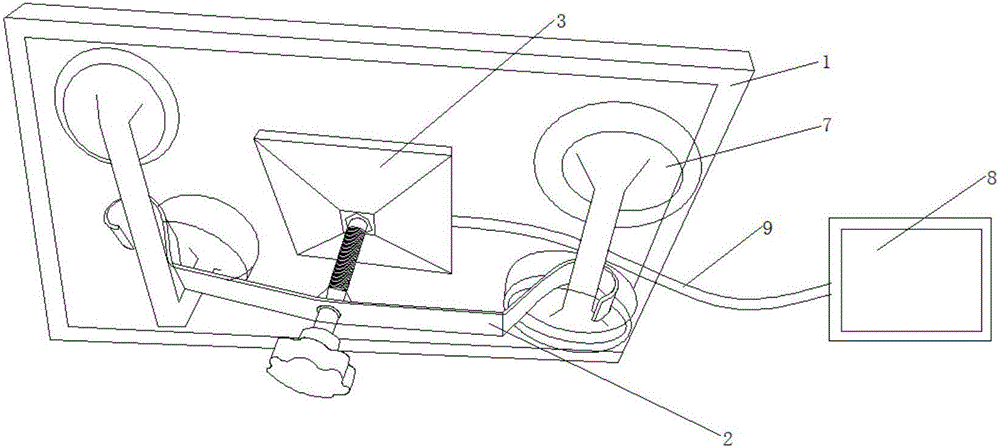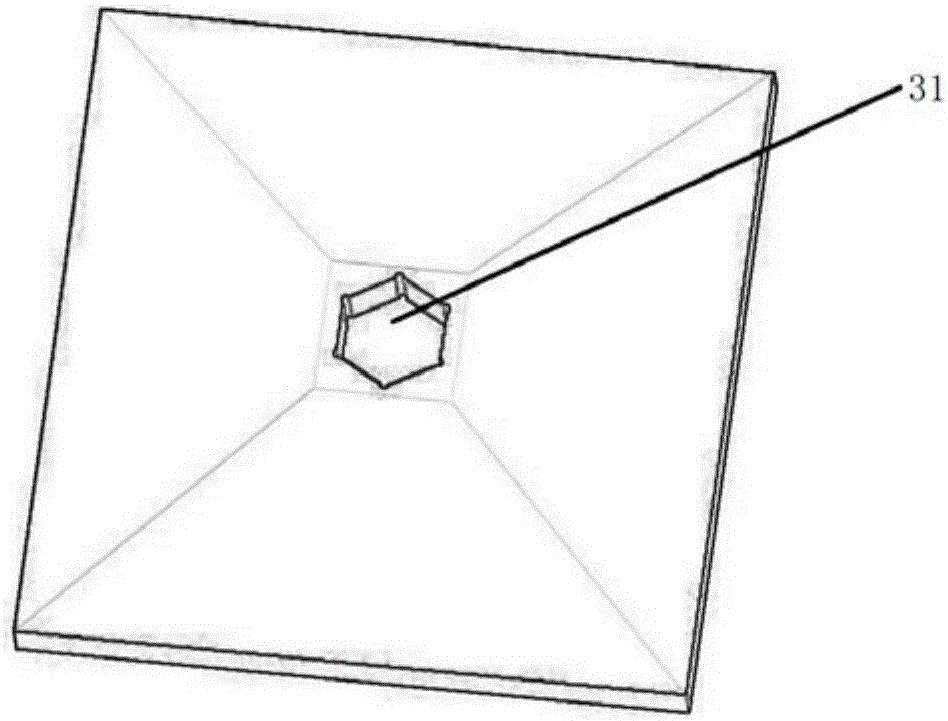Method for quickly detecting glass heat transfer coefficient based on unsteady state heat transfer technology
A technology of heat transfer coefficient and detection method, which is applied in the field of building energy-saving detection, can solve the problems such as the inability to quickly detect the heat transfer coefficient of insulating glass on site, and the inability to quickly detect the heat transfer coefficient of insulating glass, and achieve the effect of short detection time.
- Summary
- Abstract
- Description
- Claims
- Application Information
AI Technical Summary
Problems solved by technology
Method used
Image
Examples
Embodiment 1
[0034] Qualitative analysis is used to detect whether the heat transfer coefficient of insulating glass meets the construction requirements, and the on-site rapid identification of ordinary and low-e insulating glass, such as figure 1 with 2 As shown, the rapid detection device used in the detection method of the present invention includes a portable control box 8, a protective box and a fixed bracket, and the protective box is used to provide a stable heat source and detect the surface temperature of the glass to be tested. It is connected with the portable control box 8 through a wire 9, the portable control box 8 is used to monitor the detection process and process the detection data of the protective box, and the fixed bracket is used to fix the protective box to the insulating glass to be tested superior.
[0035] Among them, such as image 3 with 4 As shown, the protective box includes two rectangular semi-closed boxes 3 that are arranged symmetrically on both sides o...
Embodiment 2
[0055] The method of quantitative analysis is used to detect whether the heat transfer coefficient of insulating glass meets the construction requirements. The rapid detection device used in this method, such as figure 1 with 2 As shown, it includes a portable control box, a protective box and a fixed bracket. The protective box is used to provide a stable heat source and detect the surface temperature of the glass to be tested. The protective box is connected to the portable control box through wires. The portable The control box is used to monitor the detection process and process the detection data of the protective box, and the fixing bracket is used to fix the protective box on the insulating glass to be tested.
[0056] Such as Figure 5 with 6 As shown, the difference from Example 1 is that the semi-enclosed box in this example is made of nylon as the main material, and several heat insulation boards are arranged in the box, and the heat insulation boards are separate...
PUM
| Property | Measurement | Unit |
|---|---|---|
| depth | aaaaa | aaaaa |
Abstract
Description
Claims
Application Information
 Login to View More
Login to View More - R&D
- Intellectual Property
- Life Sciences
- Materials
- Tech Scout
- Unparalleled Data Quality
- Higher Quality Content
- 60% Fewer Hallucinations
Browse by: Latest US Patents, China's latest patents, Technical Efficacy Thesaurus, Application Domain, Technology Topic, Popular Technical Reports.
© 2025 PatSnap. All rights reserved.Legal|Privacy policy|Modern Slavery Act Transparency Statement|Sitemap|About US| Contact US: help@patsnap.com



